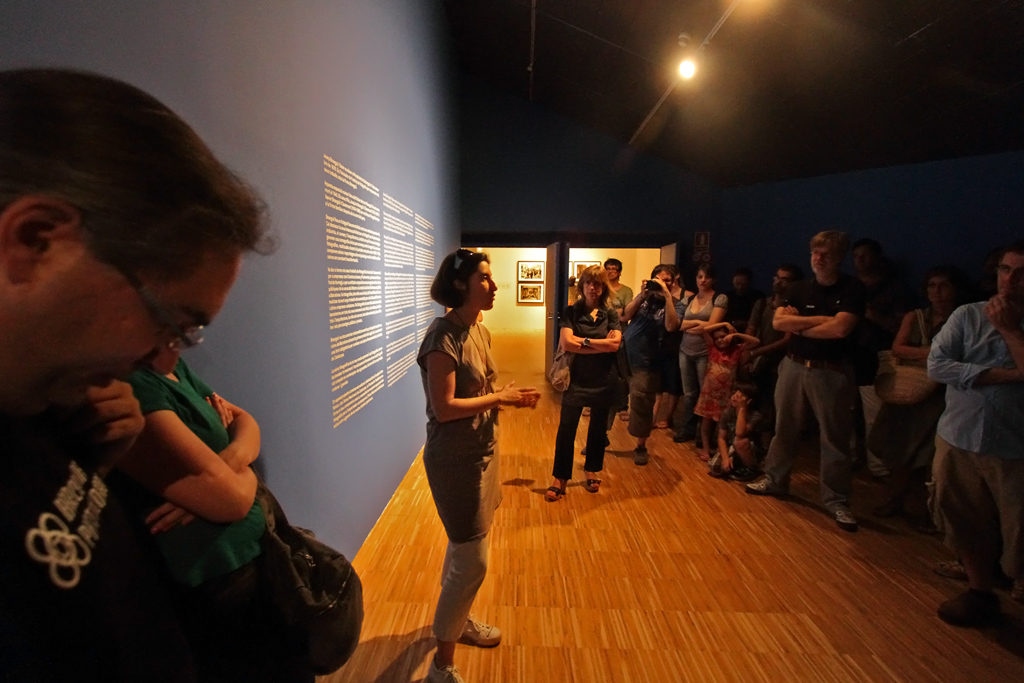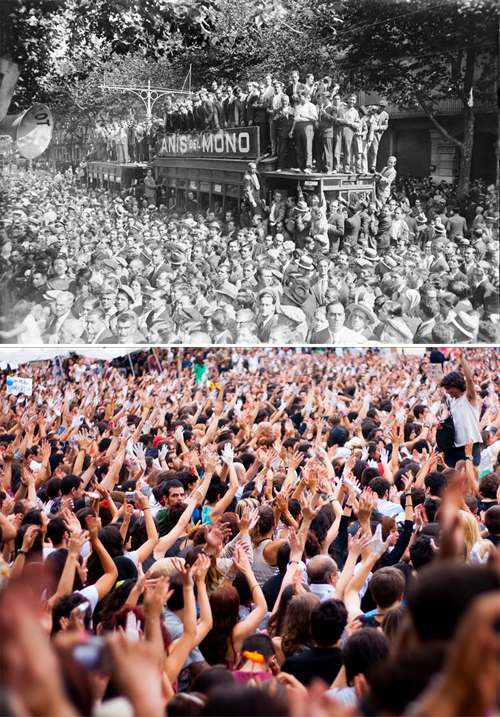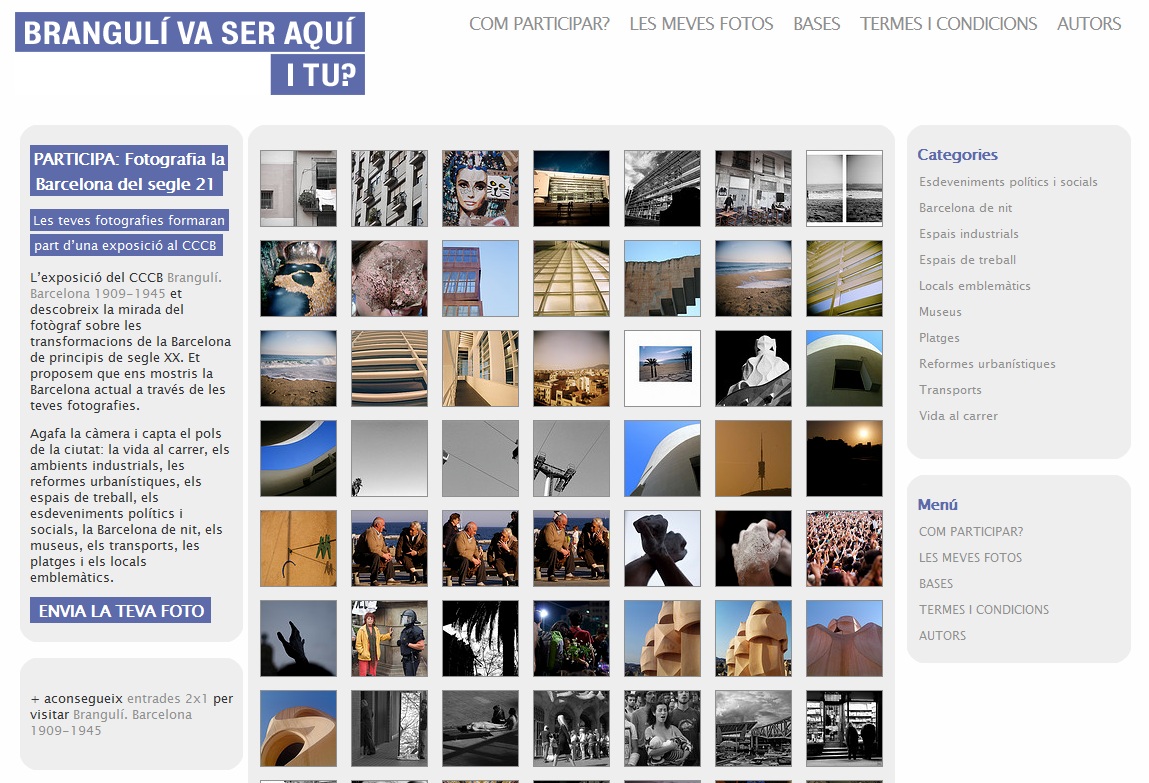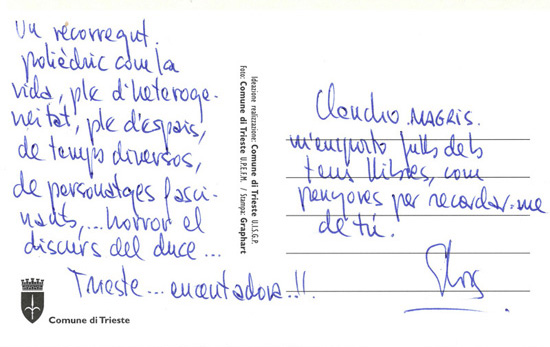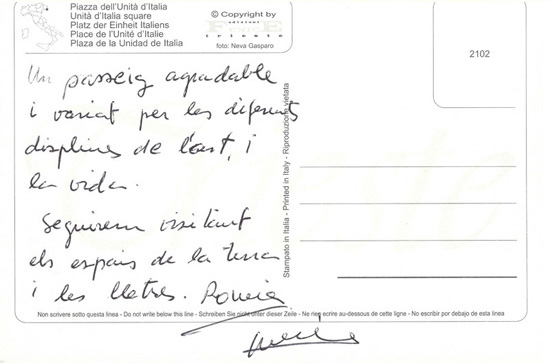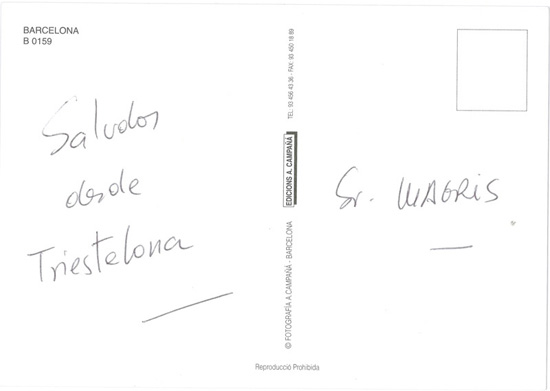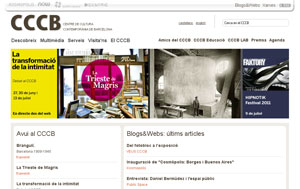 A fortnight ago, the CCCB launched a new website to give its users as much information and documentation as possible. The website allows everyone to share it, and we invite anyone who’s interested to take part in the debates and reflection on our blogs, as well as the many opportunities for participation offered by the online projects.
A fortnight ago, the CCCB launched a new website to give its users as much information and documentation as possible. The website allows everyone to share it, and we invite anyone who’s interested to take part in the debates and reflection on our blogs, as well as the many opportunities for participation offered by the online projects.
The multiplicity of contents we offer is the product of the material generated by the different departments of the CCCB and collaborators: videos, audios, images, etc. Thanks to 2.0 organizational culture, with its integrative, collaborative way of working, we can share and reassess accumulated knowledge together with users.
Another aim of this new website is for users to take part and interact with the CCCB, bringing their knowledge and impressions to the online projects and blogs, and creating ongoing dialogue with the activity’s contents generated at the CCCB. In this way, the CCCB has taken another step towards coexistence and dialogue both between information about the CCCB (activities, publications, etc.) and the documentation generated around the Centre’s activities (texts, audio, video, online projects and blog articles), and with the input represented by the voices of participating users.
The aim of these dialogues is to facilitate knowledge exchange and learning, focusing on the objectives that the Centre set for itself when it was founded: to encourage debate and reflection, to further knowledge, and to create and contribute contents for research. In short, to explore knowledge in greater depth, in the conviction that only with the participation of all sectors can we achieve quality cultural services and products.
So, what do you think of the CCCB’s new website? Do you like the new design? Which functions caught your eye?








 With over 2000 photos and the participation of more than 200 photographers, the
With over 2000 photos and the participation of more than 200 photographers, the 

